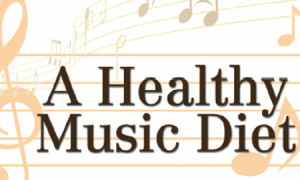Welcome to The G aka Gool’s Guitar Gossip – blogging about anything music related

To quote a great inspiration to most of us (more about him later) : “If you can feel it, might as well try it”.
But first, a story from when I shared lyric duties for 1 of my bands. Our vocalist had better English than mine, yet wondered how I wrote better lyrics than his. My answer was that what I presented would be the 5th/6th draft, as actually I’d have corrected a lot. With each draft, I’d let the words talk to me back, seaving the manure from the gold in a bunch of hay.
How I differed from him was that I never expected amazing lyrics at my 1st attempt, but would rather let the good parts shine through the bad as I re-read them over and over again. Nothing that a novelist wouldn’t do when writing a book, and as soon as he applied that approach, his lyrics improved!
Similarly, let’s bring this to the table how to become a good improviser, which is music on the spot without time for drafts. Yet, drafts do happen, in our practice time. So what I generally suggest to my students is –
RECORD YOUR SOLOS.
LISTEN BACK & SEAVE OUT YOUR OWN GOLDEN LICKS.
REPEAT THEM TO GENERATE NEW GOLDEN ONES.
Time and time again, this approach made them understand that fire only burns the 1st time, and once you know how to walk it without getting burnt, it’s fun! And it works! Every time without fail.
So back to the quote above, by none other than Joe “Satch” Satriani!
With “If you can feel it, might as well try it” Satch tells us that after hours of training and singing scales (your drafts), melodies and fingerings become sort of attached to each other with less effort. So when you actually improvise, whatever you hear in your head can be translated onto your fingers. Be adventurous!
The main thing is knowing how and where to resolve, purposely repeating “mistakes” before resolving. The safe bet is to play a semi-tone up/down to find the note that sounds right (within the key), as explained at malcolmcallus.com/fingerboard & malcolmcallus.com/jazz
In closing, here’s some Satch talk…..
www.malcolmcallus.com
Modern approaches to guitar, bass, ukulele & music theory tuition
What is it with some players who despite their solid understanding of music’s “right” notes, they still get tired (or even feel pain) when playing for a long stretch of time?
The answer is simply that musical performance is an athletic discipline like any other sport, and that effortless playing depends on the body’s fitness.
Getting the best result for the least effort is indeed the most elegant way of doing anything, but is it practice that makes perfect? I would rather say repeating nonsense achieves fluent nonsense. As the reknown Alexander Technique mentions “prevention is better than cure and hence one is to focus on how to carry out actions to build GOOD habits.” So consult, stop to listen to others with less/ no physical shortcomings, and then re-approach one’s methods afresh. Sometimes dropping the stubbornness that something is good only because it has worked for many years is the key to open a new door.
So here follow some guidelines I’ve over the years shared on how to play comfortably, and why everything IS possible! As you may note, these are split into physical and mental exercises – the physical is first as it’s the actual practical task you try; however you’ll sure instantly notice a change in application (maybe easier) when you re-try the practical tasks after reading the mental part.
All following physical examples are for a right-handed guitar player:
1. Simply rest the right hand on guitar. The weight of arm keeps guitar in place, so do not try to push the guitar inwards from the right as this effects the posture.
2. Strap to be fitted so that guitar is same angle whether sitting/standing.
3. Thumb should not curl around fingerboard but rather act as a pivot midway behind the fretboard in line with the 2nd finger from the front. If not, the palm of the hand is narrowed, restricting playing of notes on adjacent frets.
4. A good posture depends on your body staying balanced and erect, avoiding undue twisting, with your head, elbows and neck able to move freely, your back standing/ sitting up firm & no twisting of shoulders to side.
5. The left shoulder isn’t to lean sideways towards the guitar. The hand and elbows are free as to pull the guitar inwards to the left of the body, if at all necessary.
6. Avoid picking too loud with right hand as this in turn demands left hand to apply more fretting pressure.
7. Despite a tutor’s guides, the best way to improve is to experience things first hand. A good way is for you to play a piece focusing on new posture without much attention to the piece, then playing the piece again with the old posture. This will reveal how the new posture differs from the old, and how easier it is.
Mental suggestions:
1. There’s no way but the best way. It’s the easiest to master, so make a habit of that. This is known as the cycle of conscious incompetence > conscious competence > unconscious competence i.e. first you’re aware of your shortcomings, then you practice enough to garner skill & the knowledge that you know what you’re doing, then your knowledge becomes so innate that you don’t even think about it, and it flows out of you when you perform.
2. Mental rehearse what needs to be done, and focus on it before actually playing it. This way the muscles will probably react more positively, as research has proven that the muscles react when thinking about something as they would when one actually does it.
3. Practice with awareness of your goals vs too much unfocused practice repeating same mistakes. I.e. playing flamenco differs from playing metal so new postures for each might have to be learnt, as what works for one style might not necessarily work for another.
4. Listen to the music to produce a tone befitting the style being played vs just focusing on getting a better tone. Decreasing your physical efforts makes you more sensitive to producing tone colours, in turn enjoying music more.
5. Instruct yourself with positives not negatives (DOs not DONTs).
So you might still argue that the old way works better? Well try the new way, see how it functions for you, think about how it differs from your previous methods, and only then reject it.
A Chinese idiom goes: “I hear and I forget, I see and I remember, I do and I understand.”
And I bet you that if you understand the easiest way, it will become your new habit and you will not reject it. Just as many professional guitar players before you have not.
www.malcolmcallus.com
Modern approaches to guitar, bass, ukulele & music theory tuition
Creativity always having been the crux of what makes an artist, innovations to one’s music allow its listeners more anchor points to experience it differently out of “the musician’s box”.
Hence, the above, similar and others, are some of the many Q&As I approach through this blog, as to convey a sense of looking at music not only from a chords’ & scales’ point of view, but further!
www.malcolmcallus.com
Modern approaches to guitar, bass, ukulele & music theory tuition